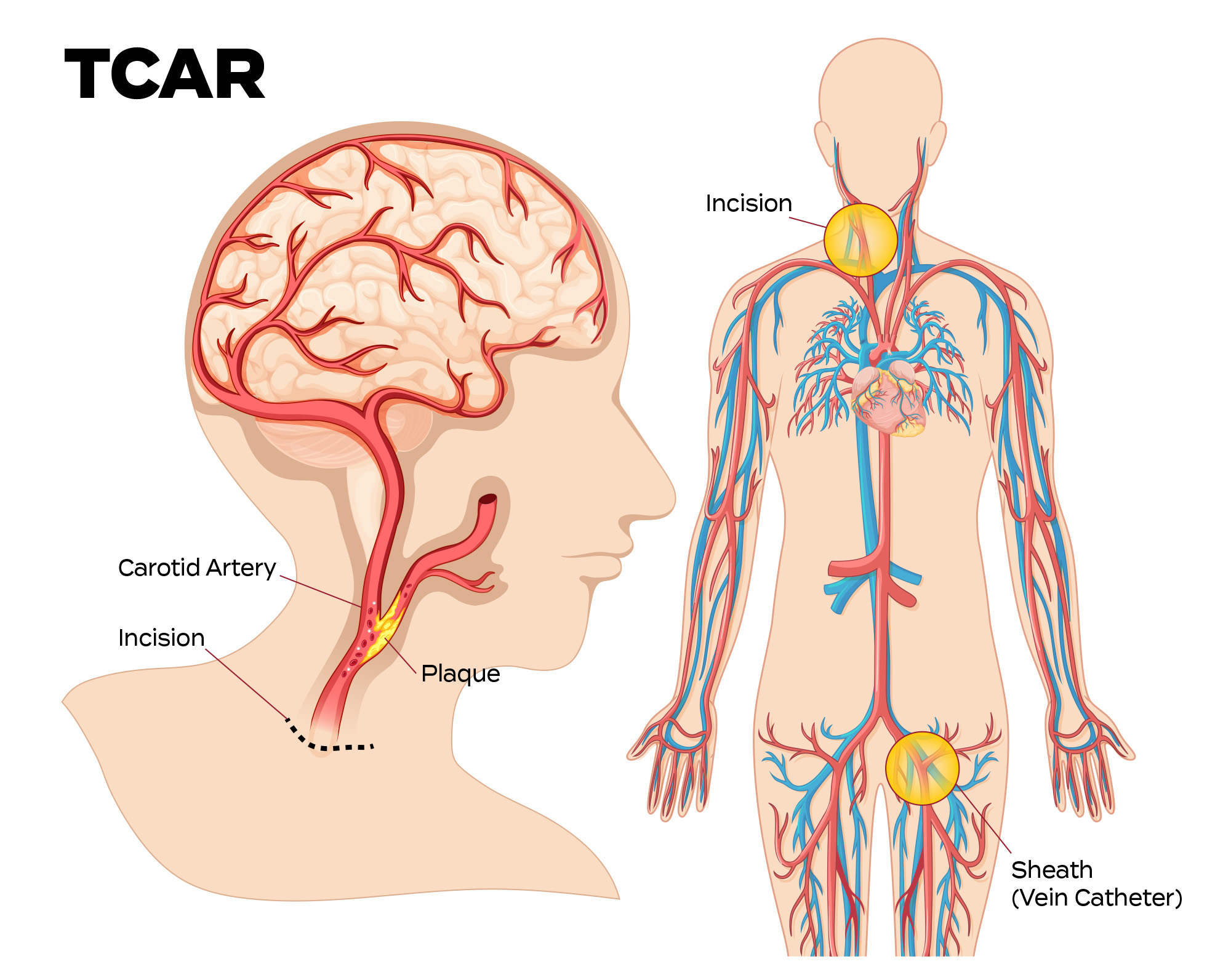Trans Carotid Artery Revascularization (TCAR Procedure)
The carotid arteries are major blood vessels that supply blood to the brain. Like other blood vessels, these arteries can be affected by atherosclerosis (hardening of the arteries), a condition known as carotid artery disease, which can increase the risk of stroke.
Why is it done?
The TCAR procedure may be a suitable treatment or preventive option for stroke if:
- You have a carotid artery blockage of 70 percent or more, especially if you’ve experienced a stroke or stroke-like symptoms, and are not healthy enough for surgery
- You’ve previously had a carotid endarterectomy but are experiencing new narrowing (restenosis) after the surgery.
- The location of the narrowing (stenosis) is difficult to treat with endarterectomy.
Description
Carotid angioplasty and stenting are performed in a sterile surgical setting. The procedure involves a small incision above the collarbone to access the common carotid artery. A soft, flexible sheath is inserted into the carotid artery and connected to a system that reverses blood flow away from the brain, helping to protect against potential plaque fragments that may dislodge during the procedure.
Blood is filtered and returned through a second sheath placed in the femoral vein in the patient’s thigh. This Neuroprotection system allows for balloon angioplasty and stenting while blood flow is reversed. After the stent is successfully placed to stabilize the plaque, the flow reversal is turned off, and normal blood flow to the brain resumes. After the procedure, you will be monitored and asked to move your arms and legs while nurses and doctors check for any new stroke symptoms.

Risks
Stroke can occur in 1–1.4% of patients without pre-procedure symptoms and in 5–7% of those with symptoms such as stroke, mini-stroke, or TIA (transient ischemic attack). After the procedure, you will be monitored and asked to move your arms and legs while nurses and doctors check for any new stroke symptoms.
What Can I Expect After Treatment?
Patients who undergo the TCAR procedure typically experience a quick recovery, often staying in the hospital for just one night. Before discharge, your doctor will provide guidance on activity, diet, and medications. You will need to avoid strenuous activities, such as lifting, for at least a week. Your doctor will inform you when it’s safe to resume normal activities and return to work. To minimize the risk of restenosis (re-occurring blockage) near the stent, you will be encouraged to make important changes to your diet, exercise routine, and overall lifestyle. Some patients may only need minor adjustments, while others may need to make more significant changes. It is crucial to avoid smoking.
